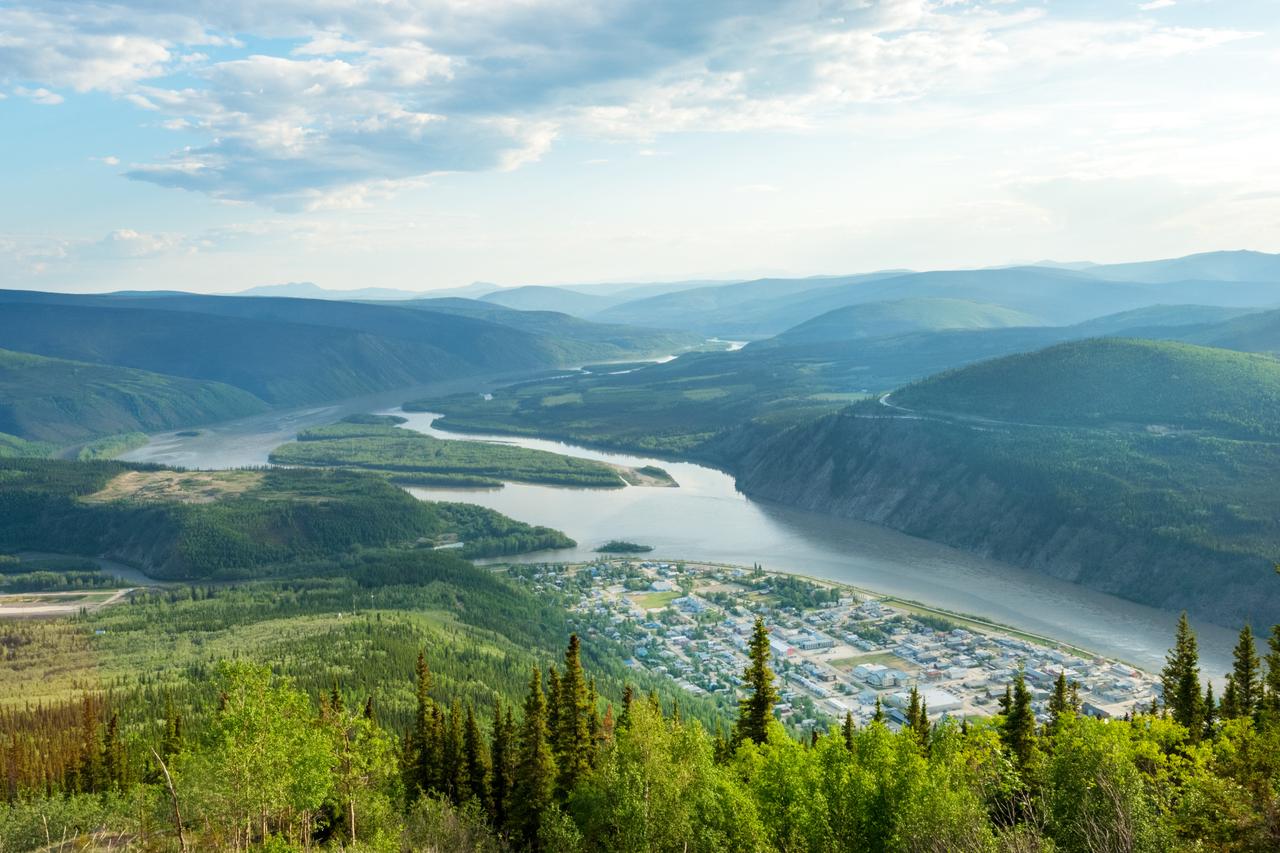
A newly released study warns that the Tintina Fault in Canada’s Yukon Territory may be capable of producing a powerful earthquake.
The fault stretches over 620 miles (1,000 kilometers) from British Columbia through the Yukon and into Alaska. Researchers now say it has quietly built up enough underground strain to unleash a magnitude 7.5 earthquake or stronger near Dawson City.
The findings, published in Geophysical Research Letters, follow an investigation led by geoscientist Theron Finley of the University of Victoria. “We determined that future earthquakes on the Tintina Fault could exceed magnitude 7.5,” Finley said.
The research focused on a 130-mile (210-kilometer) stretch of the fault near Dawson City.
Finley’s team used high-resolution satellite images and lidar scans—laser-based tools that map surface elevation through forest cover—to analyze the landscape in detail. The data revealed fault scarps, or ridges where the Earth’s surface shifted during prehistoric earthquakes.
Some landforms dated to 2.6 million years ago had moved by 3,280 feet (1,000 meters), while others from 132,000 years ago shifted by 250 feet (75 meters). These surface changes suggest repeated seismic activity throughout the Quaternary Period, which spans the last 2.6 million years.
The scientists found no evidence of large surface ruptures in the last 12,000 years. However, that period of silence may have allowed the fault to accumulate stress.
“Based on the data, we think that the fault may be at a relatively late stage of a seismic cycle, having accrued a slip deficit, or build-up of strain, of six meters [20 feet] in the last 12,000 years. If this were to be released, it would cause a significant earthquake,” Finley said.
The Tintina Fault runs roughly parallel to the Yukon River and connects with the Rocky Mountain Trench farther south.
About 40 million years ago, one side of the fault slipped 280 miles (450 kilometers) past the other. For decades, scientists believed the fault had remained inactive, due to the absence of recent seismic records. But Finley and his colleagues found evidence that contradicts that view.
“We’ve seen small earthquakes of magnitude 3 to 4 along parts of the Tintina Fault in recent decades,” Finley explained. “But nothing to suggest large ruptures—until now.” He added that the fault continues to accumulate stress at a rate of 0.008 to 0.03 inches (0.2 to 0.8 millimeters) per year.
Dawson City, home to about 1,600 people, lies directly in the path of the fault segment under study.
A large earthquake could severely damage its infrastructure, including nearby highways and mining operations that support the region’s economy. The area also faces a risk of earthquake-triggered landslides.
Although the Yukon is sparsely populated, the scale of destruction from a magnitude 7.5 quake would be significant. Scientists say residents and local authorities should not mistake the lack of recent activity for safety.
To better understand how often the Tintina Fault breaks, scientists plan to excavate trenches and examine soil and rock layers that preserve signs of past ruptures. “Right now, we just know that many have occurred, but we don't have a sense of how frequently,” Finley told Live Science.
Peter Haeussler, a geologist emeritus at the U.S. Geological Survey in Alaska, welcomed the findings. “Somebody’s finally found evidence for activity on the Tintina Fault in the Yukon,” he said.
He noted that while the area was already seen as seismically active, the study confirms the fault’s potential for much stronger earthquakes.
The researchers stressed that they cannot predict exactly when the fault will rupture.
“It could still be many thousands of years before it reaches the threshold where it ruptures,” Finley said. “But we don't know that and it's very hard to predict that.”
He added that ancient faults like Tintina can remain structurally weak for millions of years and continue to absorb tectonic pressure over time. The study warns that the recent period of stillness may mean the fault is closer to a release than previously thought.